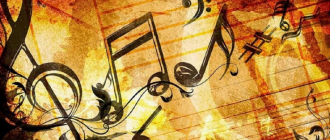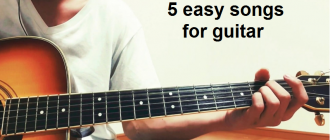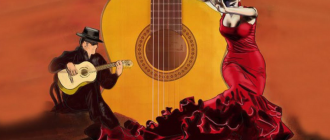In today’s post we will see what are the 9 most used rhythmic figures in music and how they sound. This will help you better understand what you hear and thus be able to identify more clearly all those rhythms that sound in the songs you like the most. This can be applied to guitar strumming, to melodies and to anything that has to do with rhythms, whatever the instrument.
I recommend listening to the rhythms in this post first and familiarizing yourself with the beats of the 4/4 time signature. Notice how the figures that are joined together fit into a single beat. Finally combine these rhythmic figures in your own way and use some invented some progression with some invented rhythm.
The 9 rhythmic figures
The black woman
If we count 1, 2, 3, 4, as marked on a time signature4/4 we will see that the note that sounds coincides with the pulsation or click.

The quaver
In the case of the eighth note we have the same thing, but in each beat we will insert two notes.

The sixteenth note
For the sixteenth note, on each beat we will play 4 notes. Below you have a video with examples of how to do all the rhythms you see in this post with claps and chords.

Quaver+semiquaver
Here we can already see the combination of notes in a single pulse. Here we will play 1 eighth note joined to 2 sixteenth notes in each beat. The rhythm is reminiscent of the trot of a horse.

sixteenth note+quaver
Here we have the same grouping of notes as in point 4 but in reverse. First the semirochea sounds and then the eighth note.

Quaver with dotted eighth note and sixteenth note
This is a very characteristic rhythm of the blues. It consists of a dotted eighth note followed by a sixteenth note. As you can see the grouping of notes coincides in such a way that they fit in each of the 4 beats.

Semiquaver and dotted eighth note
In the sixteenth note with a dotted eighth note we have a rhythm that reminds us of a heartbeat.

sixteenth note, eighth note, sixteenth note
At this point, to make it visually clear, we join the sixteenth note with an eighth note and the eighth note with another sixteenth note.

Quaver triplets
Here we have a triplet, a special valuation group, and it is so because where there should be room for only two rhythmic figures, which are the eighth notes, we put 3.

If you liked it don’t forget to share this post!






